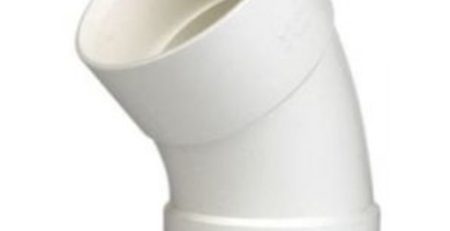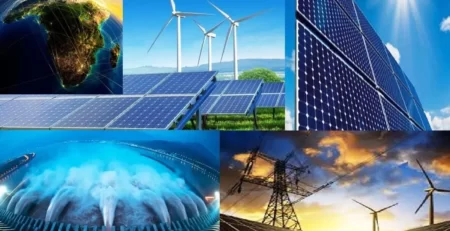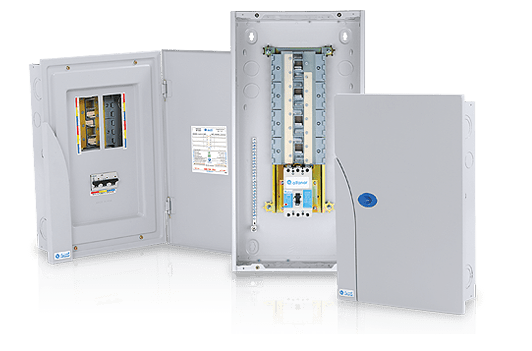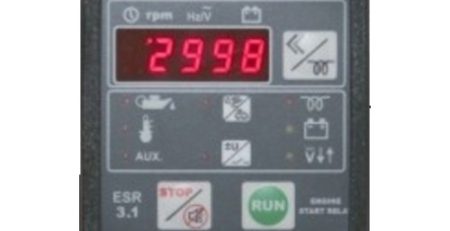Electrical Power and Energy
Power is an electrical quantity that is measured in watts, and is the rate at which energy is either being absorbed or produced by a circuit. We know that light bulbs and heaters absorb energy and that the higher their value in watts the more energy they will consume. Likewise, batteries and generators produce energy and the greater their electrical rating the more power they can deliver to the load. The unit of electrical power is the watt with its symbol being a large letter “P” indicating constant DC power or a small letter “p” indicating a time-varying AC power.
Electrical power is related to energy which is the capacity to do work. It can also be defined as the rate of by which energy is transferred. If one joule of work is either absorbed or delivered at a constant rate of one second, then the corresponding power will be equivalent to one watt so power, P can be defined as 1Joule/sec = 1Watt. Then we can say that one watt is equal to one joule per second and electrical power can be defined as the rate of doing work or the transferring of energy.
Equally we can define energy as being watts per second or joules. So if the power is measured in kilowatts (thousands of watts) and the time is measure in hours, then the unit of electrical energy is the kilowatt-hour, (kWh) and 1 kWh is the amount of electricity used by a device rated at 1000 watts in one hour.
Kilowatt-hours are the standard units of energy used by the electricity meter in our homes to calculate the amount of electrical energy we use and therefore how much we pay. So if you switch on an electric fire with an element rated at 1000 watts and left it on for 1 hour you will have used 1 kWh of electricity. If you switched on two electric fires each with 1000 watt elements for half an hour the total consumption would be exactly the same amount of electricity – 1kWh. So, consuming 1000 watts for one hour uses the same amount of power as 2000 watts (twice as much) for half an hour (half the time). Then for a 100 watt light bulb to use 1 kWh or one unit of electrical power it would need to be switched on for a total of 10 hours (10 x 100 = 1000 = 1kWh).
So we now know that the unit of power is the watt with the power absorbed by an electrical circuit being given as the product of the voltage, V and the current, I which gives:
P (watts) = V (volts) x I (amperes)
Also, by substituting Ohm’s Law into the equation above we can also define a constant DC power as being:
P (watts) = I^2 (amperes squared) x R (resistance)
or
P (watts) = V^2 (voltage squared) / R (resistance)
Then there are three possible formulas for calculating electrical power in a circuit. If the calculated power is positive, (+P) then the circuit or component absorbs the power. But if the calculated power is negative, (-P) the circuit or component delivers power in other words it is a source of energy.
Power Rating
Electrical components are given a “power rating” in watts that indicates the maximum rate at which the component coverts the electrical energy into another form of energy such as heat, light or motion. For example, a 1/4W resistor, a 100W light bulb etc. So energy is used by electrical devices to convert one form of power to another so for example, an electrical motor will covert electrical energy into a mechanical force.
Electrical motors and other electrical systems have an efficiency rating defined as the ratio of power converted into work to the total power consumed by the device. Efficiency is expressed as a decimal fraction but is generally defined as a percentage value such as 85% efficient. So we can define efficiency as being equal to power output divided by power input x 100%.
The efficiency of an electrical device or motor will always be less than one (100%) due to electrical and mechanical losses. If an electrical device has an efficiency rating of 85% then only 85% of the input power is transformed into mechanical work the other 15% is lost in heat or other losses.
Domestic electrical appliances such as washing machines, driers, fridges and freezers also have energy efficiency ratings that indicate their energy usage and cost. These ratings are given as “A” for efficient and “G” for less efficient.
So remember, the more energy efficient is the device, the less energy it will consume and the more money you will save as well as being helpful to the environment.
BY by GAHZLY
#Electrical #Power #Energy










Leave a Reply
You must be logged in to post a comment.